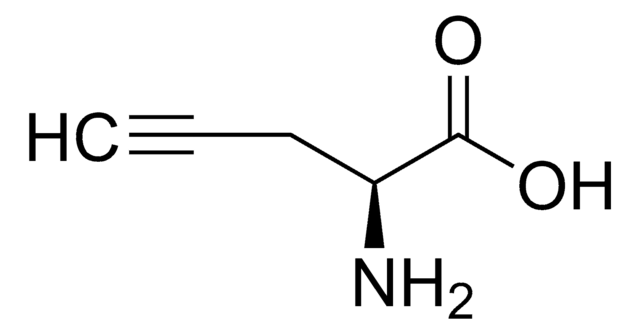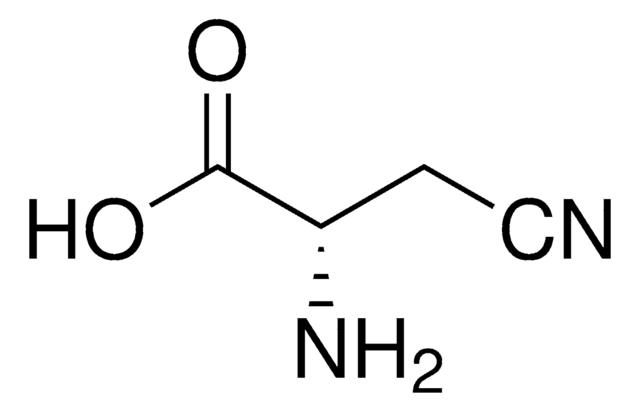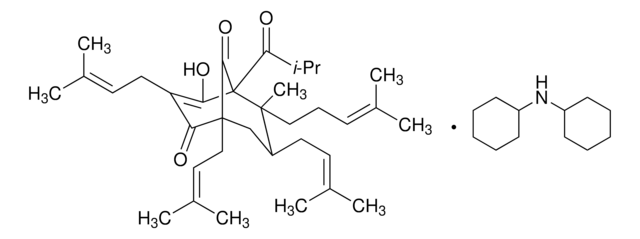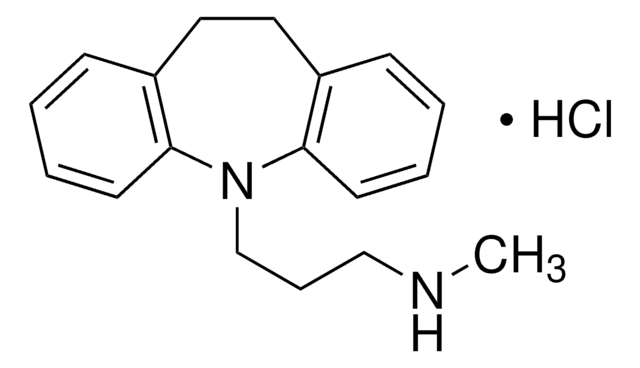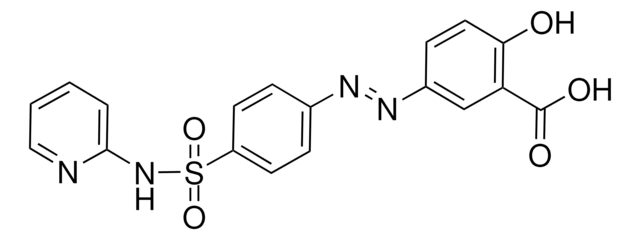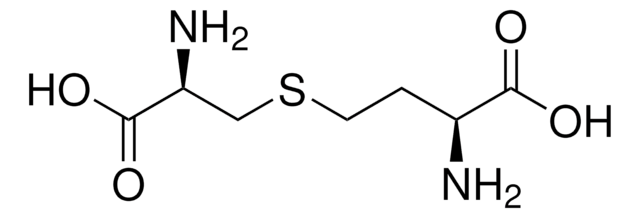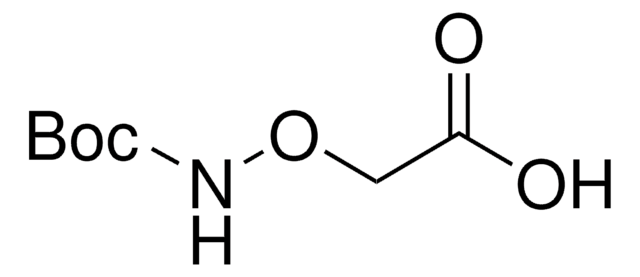P7888
DL-Propargylglycine
cystathionine γ-lyase inhibitor
Synonym(s):
2-Amino-4-pentynoic acid, PAG
Sign Into View Organizational & Contract Pricing
All Photos(1)
About This Item
Empirical Formula (Hill Notation):
C5H7NO2
CAS Number:
Molecular Weight:
113.11
MDL number:
UNSPSC Code:
12352209
eCl@ss:
32160406
PubChem Substance ID:
NACRES:
NA.26
Recommended Products
Quality Level
Assay
≥98% (TLC)
form
powder
color
white
application(s)
cell analysis
storage temp.
−20°C
SMILES string
NC(CC#C)C(O)=O
InChI
1S/C5H7NO2/c1-2-3-4(6)5(7)8/h1,4H,3,6H2,(H,7,8)
InChI key
DGYHPLMPMRKMPD-UHFFFAOYSA-N
Application
- Metabolic Labeling Strategy Boosted Antibacterial Efficiency for Photothermal and Photodynamic Synergistic Bacteria-Infected Wound Therapy.: This study demonstrates the enhanced antibacterial efficiency of a metabolic labeling strategy using ᴅʟ-Propargylglycine in photothermal and photodynamic therapy for treating bacteria-infected wounds (Li et al., 2022).
- Metabolic Labeling of Peptidoglycan with NIR-II Dye Enables In Vivo Imaging of Gut Microbiota.: This research utilizes ᴅʟ-Propargylglycine for metabolic labeling, allowing near-infrared II imaging of gut microbiota in vivo, providing new insights into microbiome studies (Wang et al., 2020).
- Hydrogen sulfide upregulated mRNA expressions of sodium bicarbonate cotransporter1, trefoil factor1 and trefoil factor2 in gastric mucosa in rats.: Investigates the role of ᴅʟ-Propargylglycine, in upregulating specific mRNA expressions in gastric mucosa, with implications for gastrointestinal research (Cheraghi et al., 2016).
Biochem/physiol Actions
DL-Propargylglycine (PAG) is an irreversible inhibitor of the enzyme cystathionine γ-lyase (GCL), a key enzyme involved in glutathione synthesis and the metabolic transsulfuration pathway which regulates homocysteine concentration and mediates cysteine synthesis. Treatment of animal disease models with PAG was shown to alleviate symptoms of diseases that impair the formation or action of hydrogen sulfide (H2S).
Signal Word
Warning
Hazard Statements
Precautionary Statements
Hazard Classifications
Eye Irrit. 2 - Skin Irrit. 2 - STOT SE 3
Target Organs
Respiratory system
Storage Class Code
11 - Combustible Solids
WGK
WGK 3
Flash Point(F)
Not applicable
Flash Point(C)
Not applicable
Personal Protective Equipment
dust mask type N95 (US), Eyeshields, Gloves
Choose from one of the most recent versions:
Already Own This Product?
Find documentation for the products that you have recently purchased in the Document Library.
Customers Also Viewed
Carolina P Lima et al.
The Journal of nutrition, 136(8), 2141-2147 (2006-07-22)
The transsulfuration pathway, which aids in regulating homocysteine concentration and mediates cysteine synthesis, may be sensitive to vitamin B-6 status because cystathionine beta-synthase (CBS) and cystathionine gamma-lyase (CGL) require pyridoxal 5'-phosphate (PLP). To assess relations between vitamin B-6 and transsulfuration
Karen P Maruska et al.
The Journal of comparative neurology, 525(3), 610-638 (2016-08-11)
Neural communication depends on release and reception of different neurotransmitters within complex circuits that ultimately mediate basic biological functions. We mapped the distribution of glutamatergic, GABAergic, and cholinergic neurons in the brain of the African cichlid fish Astatotilapia burtoni using
Csaba Szabó
Nature reviews. Drug discovery, 6(11), 917-935 (2007-10-20)
Hydrogen sulphide (H2S) is increasingly being recognized as an important signalling molecule in the cardiovascular and nervous systems. The production of H2S from L-cysteine is catalysed primarily by two enzymes, cystathionine gamma-lyase and cystathionine beta-synthase. Evidence is accumulating to demonstrate
Mercedes Tkach et al.
The EMBO journal, 36(20), 3012-3028 (2017-09-20)
Exosomes, nano-sized secreted extracellular vesicles (EVs), are actively studied for their diagnostic and therapeutic potential. In particular, exosomes secreted by dendritic cells (DCs) have been shown to carry MHC-peptide complexes allowing efficient activation of T lymphocytes, thus displaying potential as
Lambert Nzungize et al.
Journal of drug targeting, 27(9), 1004-1016 (2019-02-08)
Tuberculosis, especially multidrug resistant cases, remains an enormous public health threat. Mycobacterium tuberculosis metC (Rv3340) an enzyme involved in methionine biosynthesis was identified and characterised for antimicrobial susceptibility. We reported that the overexpression of Rv3340 in Mycobacterium smegmatis (Ms_Rv3340) produces
Our team of scientists has experience in all areas of research including Life Science, Material Science, Chemical Synthesis, Chromatography, Analytical and many others.
Contact Technical Service
